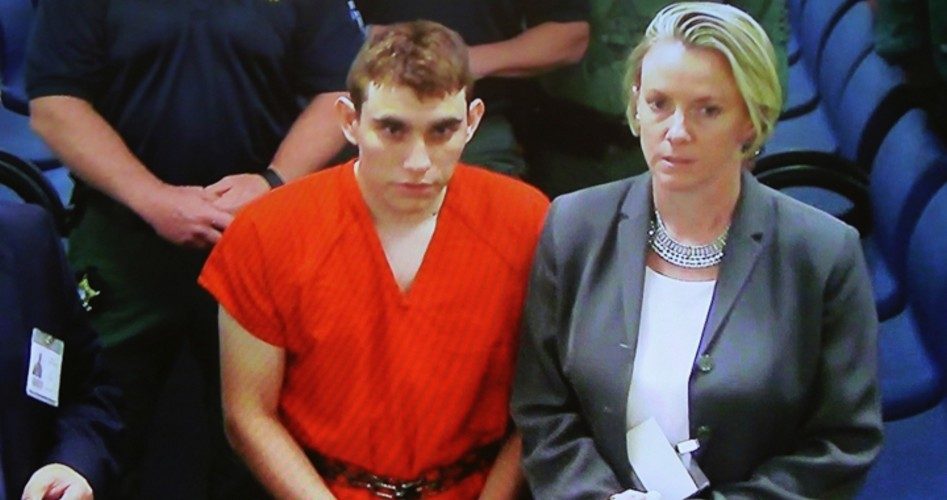
The New American reviewed what it knew about Nikolas Cruz, the Florida school shooter, on Thursday. Since then a lot more has been uncovered, some of it disturbing and totally unrelated to guns. Our previous article noted:
Cruz left abundant clues about his mental instability: gruesome pictures he published on social media of animals that he had brutally killed, claims that he wrote “Allahu Akbar” on Instagram, revelations that the FBI knew of his erratic behavior months ago when it was reported to them by one of Cruz’s classmates, the decision to expel him last year from the same school he attacked for “disciplinary” reasons, classmates being intimidated by him and avoiding contact with him because he was “weird” and a “loner,” and so forth.
But Cruz hadn’t lost control of his faculties:
Cruz carefully planned the assault. He entered the building near the end of the class day on Wednesday, wearing a gas mask and armed with smoke grenades and firearms. He set the grenades off and then triggered the fire-alarm system, which sent students scurrying into the halls where Cruz picked them off one by one with his rifle.
He wasn’t found and arrested until nearly two hours later, as he had left the building and deliberately blended into the crowd of fleeing students.
Police arrested him at his home about two hours after the attack.
Further investigation into Cruz’s background reveals many things:
• He was adopted at a young age. His father died early on but his mother just passed away in November from pneumonia. He was living with the family of a friend;
• The family knew he had a problem with depression and kept a firearm Cruz had purchased a year earlier in a locked gun cabinet;
• Cruz had a key to the cabinet;
• Early reports that Cruz was a member of a white-supremacist group were later denied by officials;
• His alleged posting of “Allahu Akbar” on Instagram could not be confirmed;
• He was expelled from Marjory Stoneman Douglas High School, the site of the shooting, a year earlier due to “disciplinary issues.” While a student, he wasn’t allowed into the building if he was carrying a backpack. Just days before the attack he had fought with the boyfriend of his former girlfriend;
• He planned his attack for Valentine’s Day;
• Police had been called to Cruz’s residence 39 times over a seven-year period with police reports including references to “mentally ill person,” “child/elderly abuse,” “domestic disturbance,” and “missing person”;
• Classmates knew something was wrong with Cruz. A schoolmate, Brody Speno, told KTLA that “something wasn’t right about him. He was off … an evil kid [who was] always getting in trouble”;
• A YouTube vlogger, Ben Bennight, told the FBI about a YouTube video he discovered on which Cruz had said, “I’m going to be a professional school shooter”;
• The FBI interviewed Bennight, who said, “They came to my office the next morning and asked me if I knew anything about the person. I didn’t. They took a copy of the screenshot and that was the last I heard from them”;
• Law-enforcement officials, after questioning Cruz, said he told them that voices in his head gave him instructions on how to carry out the attack;
• Cruz’s aunt, Barbara Kunbatovich, told the Miami Herald that she believed that he was on medication “to deal with his emotional fragility.”
This last claim was confirmed by Broward County Mayor Beam Furr, who told reporters that “[Cruz] had been undergoing some treatment [and] had been dealing with mental health issues.”
That is as much as is known at the time of this writing. What isn’t known is what was involved with Cruz’s mental health “treatment” from last year. What isn’t known is what prescription drug or drugs he might have been prescribed for his “emotional fragility,” his “mental health issues” and his “depression.”
If Cruz was prescribed drugs such as Prozac, Paxil, Zoloft, Luvox, or Effexor — called selective serotonin reuptake inhibitors, or SSRIs — this could have influenced his behavior. These drugs carry the government’s most serious warning of “increased risks of suicidal thinking and behavior, known as suicidality, in young adults ages 18 to 24.”
Luvox carries a warning of mania, a dangerous and violence-prone mental derangement characterized by extreme excitement and delusion. If it was Paxil, its warning label also includes mania, along with “insomnia, anxiety, agitation, confusion, amnesia, depression, paranoid reaction, psychosis, hostility, delirium, hallucinations, abnormal thinking, depersonalization and lack of emotion,” among others.
Photo: AP Images
An Ivy League graduate and former investment advisor, Bob is a regular contributor to The New American magazine and blogs frequently at LightFromTheRight.com, primarily on economics and politics. He can be reached at [email protected].
Related article:



